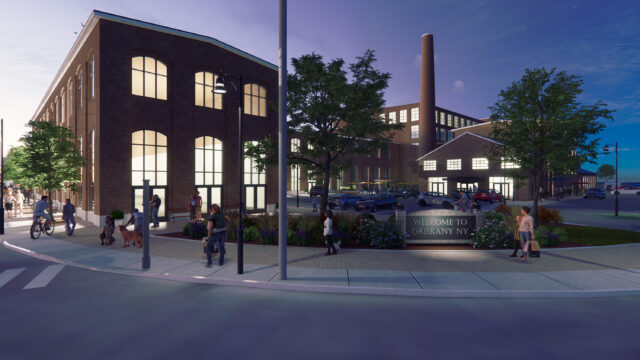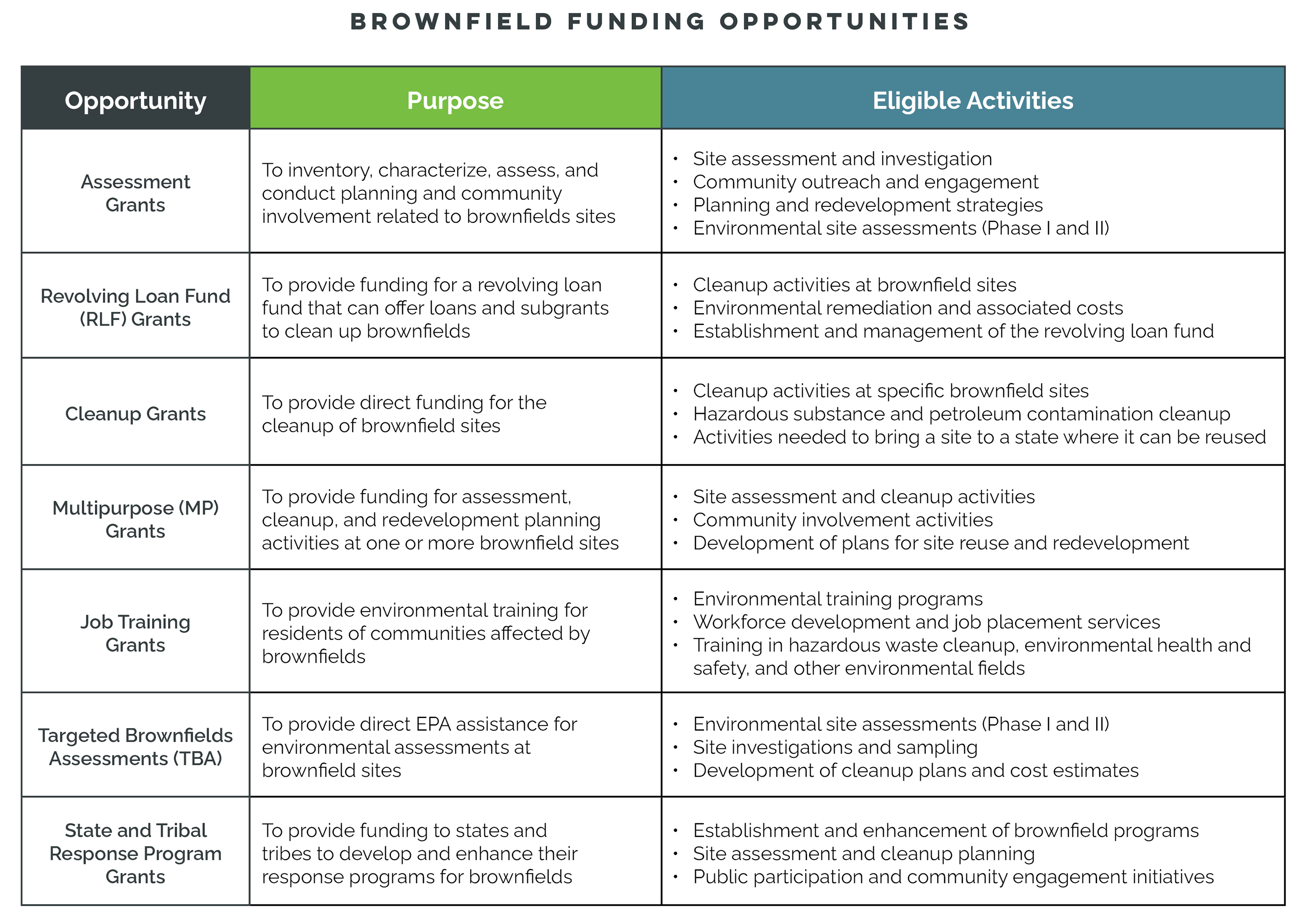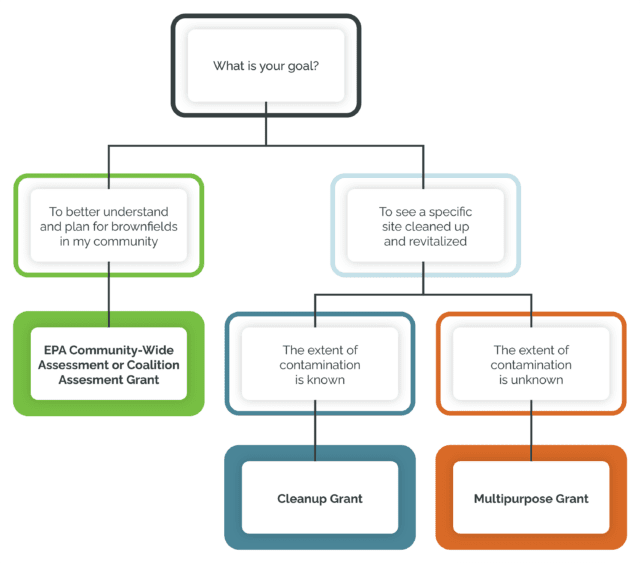Reframing Brownfields: Unlocking Funding and Removing Development Barriers to Advance Revitalization

Do you have a site that you would like to see redeveloped? Would you like more commercial development in your downtown corridor? Do you have a need for more housing? Are the known or unknown costs of development an impediment to seeing these visions realized? If your answer to any of those questions is yes, then brownfield funding can be your ticket to help remove redevelopment barriers and set the stage for revitalization.
Brownfield sites—properties where the presence or potential presence of hazardous substances, pollutants, or contaminants complicates their expansion, redevelopment, or reuse—often evoke negative connotations. The term itself can conjure images of dilapidation and risk, deterring communities from engaging with these sites or seeking out funding for their redevelopment. However, such apprehension overlooks the transformative potential of brownfield funding, particularly through programs administered by the U.S. Environmental Protection Agency (EPA) and state-level initiatives. By leveraging these resources, communities can turn perceived liabilities into thriving assets, fostering economic growth, environmental cleanup, and social rejuvenation.
The Stigma of “Brownfields”
The term “brownfield” is frequently misunderstood, leading to a pervasive stigma. This stigma is fueled by the fear of contamination, potential health risks, and the assumed insurmountable costs associated with remediation. Communities may worry about liability issues, prolonged project timelines, and the technical complexities of environmental cleanup. These fears can prevent local governments and stakeholders from pursuing redevelopment opportunities, leaving potentially valuable land unused and blighted areas unimproved.
However, this hesitation ignores the significant advancements in environmental science and policy that have made brownfield redevelopment more manageable and economically viable than ever before. The EPA’s Brownfields Program, established in 1995, has been instrumental in debunking these myths by providing the necessary financial and technical support to tackle these challenges head-on.
To effectively utilize brownfield funding, communities must first overcome the negative associations with the term. This can be achieved through education and advocacy, highlighting successful redevelopment projects and the comprehensive support available through federal and state programs.
Unpacking the Different Types of Brownfield Funding
Brownfield funding is a powerful tool for communities looking to revitalize underutilized or abandoned properties. The EPA’s Brownfields Program offers grants, revolving loan funds, and technical assistance to assess, clean up, and plan for the reuse of these sites. Each program is designed to address different aspects of brownfield redevelopment, from assessment and cleanup to community engagement and job training, ensuring comprehensive support for revitalizing contaminated properties.
State-level programs complement federal efforts, often providing additional resources and incentives tailored to local needs. Some examples include New York State’s Department of State Brownfield Opportunity Area (BOA) Program, which funds county-wide brownfield inventories, neighborhood-level revitalization planning, Phase II Environmental Site Assessments, and a range of pre-development activities, including engineering, marketing, zoning updates, and more. The Virginia Brownfields Restoration and Economic Redevelopment Assistance Fund (VBAF) provides grants or loans to local governments to promote the restoration and redevelopment of brownfield sites and to address environmental problems or obstacles to reuse so these sites can be effectively marketed to new economic development prospects. This includes both a Site Remediation Grant program and a Site Assessment and Planning Grant program. In 2023, Tennessee launched its Brownfield Redevelopment Area Grant (BRAG), a statewide brownfield grant program for identification, investigation, and remediation to encourage the redevelopment of brownfields.

How to Be Prepared
The next round of EPA Multipurpose, Assessment, and Cleanup funding is expected to open in September, with grants due 60 days later. A successful grant application requires thought, strategy, and vision. Defining your project and your goals early is critical to determining the appropriate funding strategy.
As you define your project, LaBella’s expert brownfield team can help you prepare and then implement a brownfield action plan that meets your goals and addresses:
- site assessment requirements,
- reuse planning,
- the most appropriate and flexible funding strategy,
- site ownership transfer approaches,
- legal liability protections and defenses,
- cost-effective remedial options, and
- viable and sustainable site redevelopment.
It is important to consider these action plan components during the preparation of brownfield grant applications.

Brownfield funding represents a tremendous opportunity for communities to overcome the challenges associated with contaminated and underutilized sites. By embracing the resources provided by the EPA and state-level programs, communities can unlock the potential for economic growth, environmental restoration, and social revitalization. Dispelling the negative connotations associated with brownfields and fostering a proactive, informed approach to redevelopment can transform these sites from stigmatized liabilities into thriving community assets.

About the Author
Norabelle Greenberger, AICPEastern NY Planning Lead, Brownfields Market Leader
Insights by Norabelle Greenberger, AICP:
Currently serving as Eastern NY Planning Lead and Brownfields Market Leader at LaBella, Norabelle has over 12 years of experience in community, environmental, and transportation planning, with a strong emphasis on downtown and site revitalization. She specializes in preparing Brownfield Opportunity Area (BOA) Plans, Downtown Revitalization Initiative (DRI) Plans, NY Forward Strategic Investment Plans, and economic development plans. Well-versed in a wide range of funding programs, project implementation strategies, and the SEQR process, Norabelle also has a proven track record of securing and administering grant funding for both public and private clients.

